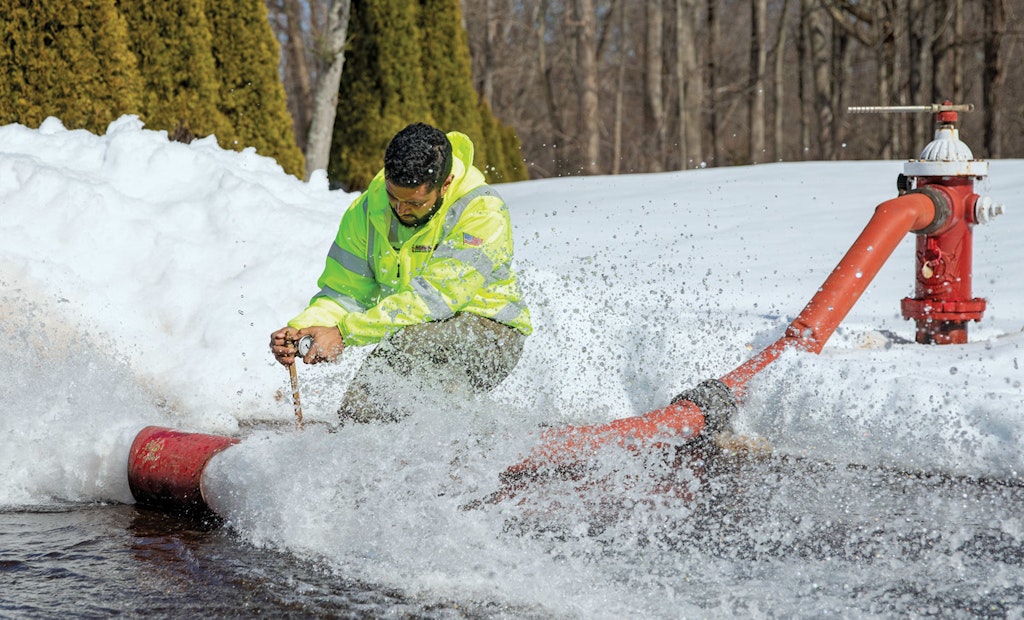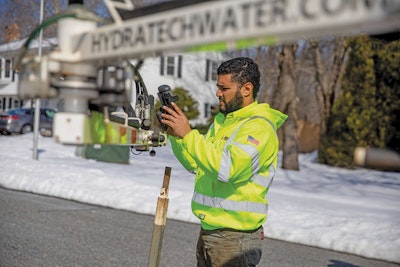
Jonathan Gonzalez-Rosario, an operator with local contractor Hydra Tech, checks the water pressure while flushing a fire hydrant in Shrewsbury, Massachusetts. The town contracted Hydra Tech to carry out its unidirectional flushing project. (Photography by Scott Eisen)
To combat a long-standing water-quality problem, the Town of Shrewsbury Water and Sewer Division in Massachusetts recently completed a comprehensive unidirectional flushing project aimed at removing manganese from its water mains.
The roughly $800,000 project, funded by water...










